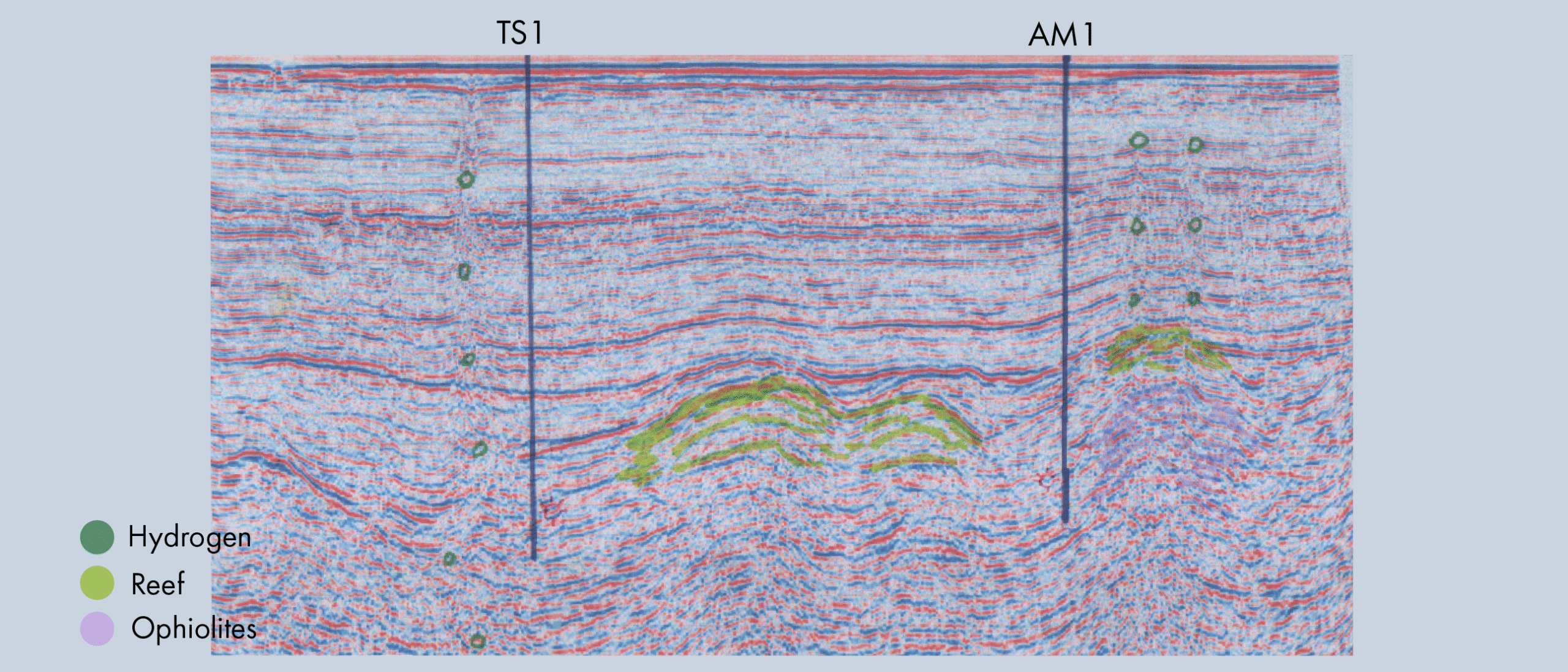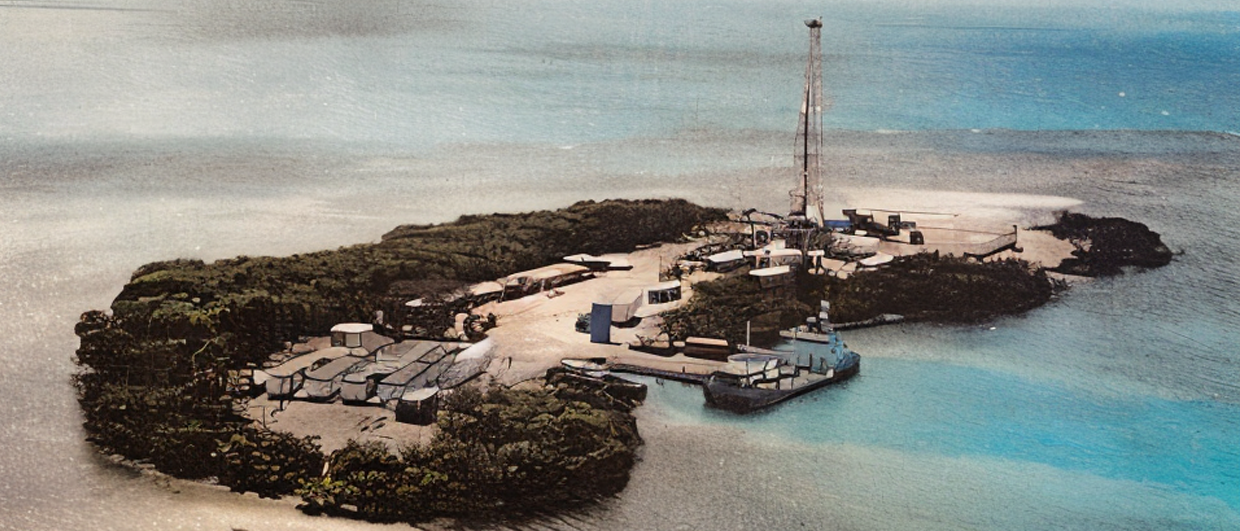HydroGenesis believe that natural hydrogen exists in large quantities in the subsurface, we just haven’t been looking in the right place. We are developing an exploration concept to pioneer this exciting and world-changing clean energy source and have a number of agreements in place, focused on the African continent.
For a few years now, hydrogen has been touted as being a significant contributor to decarbonisation of energy systems, industries and transport. Hopes, and major investments, have so far focused on blue – natural gas reformation coupled with carbon capture and storage – and green – renewable electricity powering electrolysers – hydrogen as methods to generate sufficient quantities to make a real difference.
However, both blue and green hydrogen have their issues – both are derivatives of another primary energy resource, with losses through inefficiencies. There are storage issues as well, which is very costly at the moment; hopes are for 2.5 – 4 USD/kg by 2030. According to the Hydrogen Council, announced projects, largely in green hydrogen, show 570 billion USD worth of investments through to 2030 but only 7% of these announced investments have passed FID.
This nascent industry is beginning to receive more attention and a small number of companies have been able to raise money, though largely where the opportunity is to appraise the serendipitous discoveries. By far the biggest investment in natural hydrogen has been a $245M Series-B raise by Koloma in the USA, Q1 2024, which could well represent more than all the other investments into natural hydrogen combined.
A growing number of companies are now taking on the natural hydrogen exploration challenge from the geology up. A ‘hydrogen system’ is being developed and existing geophysical, geochemical and geological technologies are being repurposed. Investments are slow in coming, but with green and blue hydrogen projects stalling, surely the time has come for natural hydrogen to be backed!
Natural hydrogen generation
There are several processes that generate natural hydrogen, with a few likely to generate sufficient quantities to trap and exploit. Oxidation and radiolysis are the two main generating processes likely to yield these quantities in areas with potential for suitable reservoir and seal rocks. Others worth investigating are high-temperature, overmature thermogenesis of organic matter, mantle seepage and friction along major fault planes.
OxidationSerpentinisation describes a range of hydration, oxidation, and reduction reactions that affect ultramafic rocks, forming an alteration in mineral assemblage. When water is the oxidant in these reactions, H2 is formed. Serpentinisation commonly occurs in oceanic crust at temperatures from ambient (~0°C) up to ~400°C. On land, it occurs in ophiolite complexes at lower temperatures (generally <200°C) and greenstone belts that form large chunks of Precambrian basement.
Oxidation reactions not associated with serpentinisation have also been shown to produce H2. These reactions involve iron-bearing silicate minerals found in a range of rock types (basalt to granite) and occur at a range of temperatures, from cool, shallow aquifer environments, to hotter hydrothermal alteration.
Iron oxides, such as in banded iron formations (BIFs), are another potential kitchen. Through weathering of BIFs, with O2 as the oxidant rather than water, hydrogen generation could occur at or near the earth’s surface. The free hydrogen generated may remain trapped in the newly formed minerals and then released into the subsurface post-burial. These reactions could also occur with water on BIFs that exist beneath young sedimentary cover and where there is low heat flow.
RadiolysisNaturally occurring radioactive decay splits molecules of water, creating radiolytic H2. Generation of radiolytic H2 depends on the relative proportions of potassium to uranium and thorium, the water-to-rock ratio, the geometric relationship between the water and the rock, attenuation of the radioactive particles (stopping power, or stopping distance), and water purity. Radiolysis is most intense at the water-rock interface and so radiolytic H2 production rates will be highest in fine-grained rocks, with high water-filled porosity, and high concentrations of radioelements.
ThermogenesisMolecular hydrogen is both generated and consumed during the petroleum maturation process, and overmature hydrocarbon provinces are another potential hydrogen source. Past the dry gas window, at temperatures of over 300°C, hydrogen generation is abundant, with the free gas likely to remain within the pore spaces of the organic-rich rock.
Magmatic/Mantle SeepageHydrogen is a common component of volcanic gasses, with higher concentrations associated with higher magmatic temperatures. Studies of various volcanoes have shown significant quantities of hydrogen are constantly emitted. Another deep source of hydrogen is from the degassing of the mantle, constantly seeping up through the crust. This has the potential to be focussed at major crustal faulting, acting as the fluid conduit and fill traps where a good reservoir and seal exists.
MechanochemicalMolecular hydrogen is a common component of fault gases and sometimes increases in concentration are associated with seismic activity with researchers investigating whether earthquakes generate H2. Lab experiments show evidence that the grinding of silicate minerals in the presence of water can lead to the formation of free hydrogen. When extrapolated, the models suggest large quantities – several magnitudes larger than the other generation methods – of molecular hydrogen are generated during significant earthquake events.

Where are we looking
With knowledge of what generates natural hydrogen, the next step is deciding where on the planet to look. We need to identify our preferred areas for a hydrogen system to be present.
Clearly there is a huge natural hydrogen exploration playground when based purely on where we expect to find a source. Therefore, the next step is to postulate on where the generated hydrogen may find a reservoir, trap, and seal so that we can define meaningful plays and prospects.
From the chart above, obvious candidates for exploration are ophiolites, intracratonic basins – including the cratonic basement – with greenstone belts and BIFs, areas with high occurrence of layered basic intrusions and areas of known granite and uranium ores.
Another aspect that needs to be considered is the presence and flow of water. There are a number of ways that water can interact and be available to the mineralogies required for the production of hydrogen in the subsurface, but a better understanding is needed to more accurately predict the effect on prospectivity.
Intracratonic basins
Intracratonic basins are likely to be the lowest-hanging fruit for natural hydrogen exploration due to their favourable, relatively simple geology, having multiple hydrogen plays and comparative ease of access. There are known natural hydrogen occurrences in intracratonic basins around the world, such as in Kansas, US and the Taoudeni Basin in Africa. In the Taoudeni Basin in Mali, the Bourakebougou hydrogen field stands out as a natural hydrogen occurrence.
Multiple plays exist in intracratonic settings, including shallow weathering of BIFs and oxidation of other iron-bearing silicates, serpentinization of greenstones, radiolysis in areas of heightened Uranium and Thorium occurrence, high temperature magmatic intrusive opportunities, thermogenesis in the deepest and hottest parts of the basins and deep sourced leakage through crustal scale faulting.
Reservoir lithologies and trapping structures are a known quantity in intracratonic basins, with a number having a long history in hydrocarbon exploration. Sealing lithologies are also known to exist, with hydrogen likely to be held by mudstones as well as salt and some intrusive lithologies. Thermogenic processes are likely to leave generated hydrogen trapped in the mudstone, requiring fracking and a number of basement-water interactions (including BIFs) will leave free hydrogen to exist in the weathered fractures.
In cratonic areas, we are reliant on meteoric water percolating into the subsurface, often over timescales of 10,000s of years and potentially over great distances.
Ophiolites
Ophiolites around the globe are known to emit natural hydrogen and the dominant sourcing process for these emanations is the serpentinisation of the ultramafic rocks. Serpentinisation is a fast process, on a geological timescale which gives two main play concepts; one requiring historical trapping of hydrogen within the accretionary melange/forearc sediments that are subsequently covered by the ophiolite. The other concept is current day serpentinisation at the base of the ophiolite, at depths where the temperatures reach between around 200 – 350°C, with the hydrogen moving up through faulting within the geological section into traps.
In ophiolites, de-watering due to metamorphic processes generates water in areas where hydrogen is generated, as well as dehydration of the subducting slab. Meteoric water will also find a way to depth through the many faults associated with the tectonics.

How are we looking
One major benefit of natural hydrogen exploration is that we already have the methods, technologies, and a huge workforce with the perfect skillset. We can leverage the oil industry for know-how, with an almost identical methodology; identifying source, migration, reservoir, trap and seal. The major difference being different source rock requirements, including modelling of the hydrogeology.
As most prospectivity is onshore, exploration for natural hydrogen will go through a funnel with large-scale, low-cost studies followed by increasingly costly geophysical acquisition including regional airborne projects, then targeted seismic and ending up at the point of wildcatting wells.
A portfolio will be key. Clearly a lot of work needs to be done to be able to systematically explore in the right places and successfully drill accumulations of a size that justifies the expenditure. If this can be done, an excellent, future-compatible energy source will be realised.

What to do with an accumulation
A major consideration with all types of hydrogen is how to best use it – it is not easy to transport or store for long periods of time, mainly due to having low energy density by volume. This is an even more pertinent question for geological hydrogen, as it is unlikely to be discovered in convenient locations for end use.
There are several use cases for hydrogen, including existing industries of fertiliser production and in oil refining. Large investments in blue and green are being justified to target the decarbonising of some hard to abate industries, such as industrial heating (e.g. steel production), shipping, aviation and even ground transportation. A bit more blue sky, there are even proposals for hydrogen grids to replace natural gas grids to fuel hydrogen boilers and hobs.
In Africa, where HydroGenesis is currently focussed, the best use cases would be direct electrification to the grid or to generate ammonia for fertiliser use as both are major requirements on the continent.
Ready to test the science
There are many subsurface processes known to generate natural hydrogen, with the most pressing research addressing where we might find lithologies to store and trap the hydrogen so that we can exploit the resource in substantial enough quantities. Oxidation, radiolysis and thermogenesis in intracratonic basins as well as serpentinisation in ophiolites present the best opportunities.
To realise the potential, investment dollars are needed, which should be a no-brainer when considering the amount being committed to green and blue hydrogen projects. If released, there are a growing number of companies ready to test the science and bring about an era of clean energy based on an abundant and cheap natural resource.





